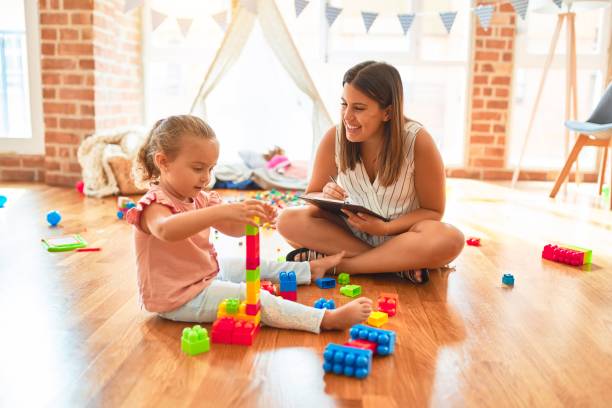Therapy can be scary and intimidating to new clients. It can feel especially overwhelming to a child. If you’re a family therapist or even a social worker looking to help your younger clients and their parents feel more welcome, it’s a good idea to put extra thought into how you design your therapy office. Not only can little details make the difference between how comfortable a child and their family feel, but they might even be helpful when it comes time to treatment planning. For a few ideas of ways, you can make your child therapy office more welcoming, read on.
Fill the waiting room area with educational games and toys.


Many potential clients avoid signing up for a first session with their child because they don’t know what to anticipate. Some believe that therapy offices are clinical and much like doctors’ offices. They worry their child won’t know what to say, won’t open up to the therapist, and will even have reservations about how they’ll behave in what’s often a first-time situation. One way to make a first therapy visit more welcoming is to provide tools and toys children can play with as their parents fill out registration papers.
Items like magnetic blocks, books for all age levels, puzzles, sensory toys, and even a sand tray are great items for your waiting room area. Consider setting up a table in the corner of the room with arts and crafts supplies for your more creative child clients. You might be surprised by what they create while they’re waiting to see you, something that might even be useful in your overall assessment.
Use toys that will lend to treatment planning.


Perhaps you’re a child anxiety therapist specializing in kids in elementary school. One way to help them feel more comfortable as they begin therapy is to allow them to bring toys and tools from the waiting room into the first session. The reality is that kids will gravitate toward toys they’re interested in. Not only will the toy or book they pick up give you an idea of where to start with their interests and getting to know them, but it’ll give you a chance to start treatments more discretely. If a child were to be drawn to the sand tray, you could ask them to bring with them four items you could explore further in the session.
Even if your background isn’t in play therapy, using toys a kid feels comfortable with is a great way to get them to open up. The more relaxed the child is, the easier it will be to make the parents feel better, too: something that will be mirrored in their child’s response to the new environment.
Meet with parents of younger children before and after sessions.


Check-in with parents before and after sessions so that they know what to expect. Parents can become great allies in helping a child to learn to trust you. The more confident they feel about treatment, the faster you’ll be able to make progress with your younger client.
In the end, your families will feel more comfortable if you take the time to consider their needs when designing your therapy office. From choosing educational tools and toys for all ages and genders to working those items into play and art therapy sessions, you’ll set yourself and your clients up for a strong therapeutic alliance from the very first session with the right planning. Whether you’re a behavioral therapist hoping to offer CBT and play therapy or a narrative therapist focused on the arts, the children you work with will gain a sense of trust in knowing you cared enough to consider them. Best of luck to you in your practice. Remember to take time out for self-care!





